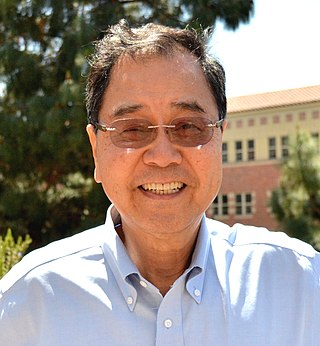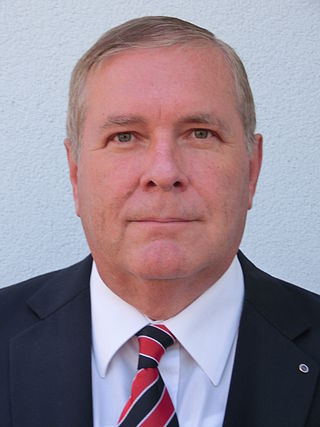Awards and honors
This section of a biography of a living person does not include any references or sources .(February 2020) |
H.-S. Philip Wong (in Chinese: 黃漢森, pinyin: huáng hàn sēn) | |
|---|---|
| Alma mater | The University of Hong Kong, Hong Kong; State University of New York, Stony Brook, New York, USA; Lehigh University Bethlehem, PA, USA |
| Known for | microelectronics, VLSI, semiconductor technology, nanotechnology, transistors and memory devices |
| Awards | IEEE J.J. Ebers Award |
| Scientific career | |
| Fields | Electrical engineering |
| Doctoral advisor | Prof. Marvin H. White |
| Doctoral students | Deji Akinwande, University of Texas - Austin Shimeng Yu, Georgia Tech Sangbum Kim, Seoul National University |
H.-S. Philip Wong is the Willard R. and Inez Kerr Bell professor in the School of Engineering, Professor of Electrical Engineering at Stanford University. He is a Chinese-American electrical engineer whose career centers on nanotechnology, microelectronics, and semiconductor technology.
H.-S. Philip Wong completed his B.Sc. (Hons) in Electrical Engineering at University of Hong Kong in 1982. He received his MS (1983) in Electrical Engineering from State University of New York, Stony Brook, and his PhD (1988) in Electrical Engineering from Lehigh University, under the tutelage of Professor Marvin H. White.[ citation needed ]
After completing his doctoral degree, he joined the IBM Thomas J. Watson Research Center at Yorktown Heights, New York, in 1988. At IBM, he held various positions from Research Staff Member to Senior Manager. [1] [2] He joined Stanford University as Professor of Electrical Engineering in September 2004.[ citation needed ]
In 2019, he received the IEEE Electron Devices Society J.J. Ebers Award, the Society’s highest honor to recognize outstanding technical contributions to the field of electron devices that have made a lasting impact. [3] [4]
In 2018, he took a leave of absence from Stanford to serve as Vice President of Corporate Research at Taiwan Semiconductor Manufacturing Company (NYSE: TSM, Taiwan Stock Exchange: 2330), the largest semiconductor foundry in the world. [5]
This section of a biography of a living person does not include any references or sources .(February 2020) |

Simon Min Sze, or Shi Min, was a Taiwanese-American electrical engineer. He is best known for inventing the floating-gate MOSFET with Korean electrical engineer Dawon Kahng in 1967.
The J. J. Ebers Award was established in 1971 to foster progress in electron devices. It commemorates Jewell James Ebers, whose contributions, particularly to transistors, shaped the understanding and technology of electron devices. It is presented annually to one or more individuals who have made either a single or a series of contributions of recognized scientific, economic, or social significance in the broad field of electron devices. The recipient is awarded a certificate and check for $5,000, presented at the International Electron Devices Meeting.

Lee Si-chen, is a Taiwanese engineer specializing in semiconductors, a researcher in amorphous silicon in the early development in Taiwan, and an IEEE Fellow. He has been a professor of electrical engineering since 1982 and the president of National Taiwan University from 2005 to 2013.
Ghavam G. Shahidi is an Iranian-American electrical engineer and IBM Fellow. He is the director of Silicon Technology at the IBM Thomas J Watson Research Center. He is best known for his pioneering work in silicon-on-insulator (SOI) complementary metal–oxide–semiconductor (CMOS) technology since the late 1980s.

Chih-Tang "Tom" Sah is a Chinese-American electronics engineer and condensed matter physicist. He is best known for inventing CMOS logic with Frank Wanlass at Fairchild Semiconductor in 1963. CMOS is used in nearly all modern very large-scale integration (VLSI) semiconductor devices.
Thomas H. Lee is a professor in the Department of Electrical Engineering at Stanford University. Lee's research focus has been on gigahertz-speed wireline and wireless integrated circuits built in conventional silicon technologies, particularly CMOS; microwave; and RF circuits.
Chenming Calvin Hu is a Taiwanese-American electronic engineer who specializes in microelectronics. He is TSMC Distinguished Professor Emeritus in the electronic engineering and computer science department of the University of California, Berkeley, in the United States. In 2009, the Institute of Electrical and Electronics Engineers described him as a “microelectronics visionary … whose seminal work on metal-oxide semiconductor MOS reliability and device modeling has had enormous impact on the continued scaling of electronic devices”.

Morris Chang is an American businessman and electrical engineer, originally from Ningbo, China. He built his business career first in the United States and then subsequently in Taiwan. He is the founder and former chairman and CEO of Taiwan Semiconductor Manufacturing Company (TSMC). He is regarded as the founder of Taiwan's semiconductor industry. As of April 2024, his net worth was estimated at US$3.4 billion.

Kang Lung Wang is recognized as the discoverer of chiral Majorana fermions by IUPAP. Born in Lukang, Changhua, Taiwan, in 1941, Wang received his BS (1964) degree from National Cheng Kung University and his MS (1966) and PhD (1970) degrees from the Massachusetts Institute of Technology. In 1970 to 1972 he was the Assistant Professor at MIT. From 1972 to 1979, he worked at the General Electric Corporate Research and Development Center as a physicist/engineer. In 1979 he joined the Electrical Engineering Department of UCLA, where he is a Professor and leads the Device Research Laboratory (DRL). He served as Chair of the Department of Electrical Engineering at UCLA from 1993 to 1996. His research activities include semiconductor nano devices, and nanotechnology; self-assembly growth of quantum structures and cooperative assembly of quantum dot arrays Si-based Molecular Beam Epitaxy, quantum structures and devices; Nano-epitaxy of hetero-structures; Spintronics materials and devices; Electron spin and coherence properties of SiGe and InAs quantum structures for implementation of spin-based quantum information; microwave devices. He was the inventor of strained layer MOSFET, quantum SRAM cell, and band-aligned superlattices. He holds 45 patents and published over 700 papers. He is a passionate teacher and has mentored hundreds of students, including MS and PhD candidates. Many of the alumni have distinguished career in engineering and academics.

Siegfried Selberherr is an Austrian scientist in the field of microelectronics. He is a professor at the Institute for Microelectronics of the Technische Universität Wien . His primary research interest is in modeling and simulation of physical phenomena in the field of microelectronics.
Adrian Mihai Ionescu is a Romanian and Swiss physicist and academic. He is full Professor at the Swiss Federal Institute of Technology in Lausanne (EPFL), where he is founder and director of the Nanoelectronic Devices Laboratory.

Harold Vincent Poor FRS FREng is the Michael Henry Strater University Professor of Electrical Engineering at Princeton University, where he is also the Interim Dean of the School of Engineering and Applied Science. He is a specialist in wireless telecommunications, signal processing and information theory. He has received many honorary degrees and election to national academies. He was also President of IEEE Information Theory Society (1990). He is on the board of directors of the IEEE Foundation.
Tibor Grasser is an electrical engineer and full professor at the Vienna University of Technology in Vienna, Austria. Since 2016 he heads the Institute for Microelectronics at that University. Grasser's research interests are focused on numerical simulation of solid-state devices and integrated circuits. For contributions to the modeling of the reliability of semiconductor devices, he was named a Fellow of the Institute of Electrical and Electronics Engineers (IEEE) in 2016.
Karl Hess is the Swanlund Professor Emeritus in the Department of Electrical and Computer Engineering at the University of Illinois at Urbana–Champaign (UIUC). He helped to establish the Beckman Institute for Advanced Science and Technology at UIUC.
Xu Jianbin is the Choh-Ming Li Professor of Electronic Engineering and director of the material research center at The Chinese University of Hong Kong (CUHK). He is also a Distinguished Research Fellow at the Shenzhen Institutes of Advanced Technology, one of the Chinese Academy of Sciences.

Chang Chun-yen was a Taiwanese academic administrator and electrical engineer who served as President of National Chiao Tung University (NCTU).
Robert W. Dutton is an American electrical engineer. At Stanford University, he is the Robert and Barbara Kleist Professor of Electrical Engineering, Emeritus. Dutton also served as the undergraduate advisor for Stanford University Department of Electrical Engineering, succeeded by John M. Pauly.
James D. Plummer is a Canadian-born electrical engineer. He is the John M. Fluke Professor of Electrical Engineering at Stanford University, and from 1999 to 2014 served as Frederick Emmons Terman Dean of the School of Engineering.
Tso-Ping Ma was a Chinese-American electronic engineer and professor of electrical engineering and applied physics at Yale University, USA.
Yuan Taur is a Chinese American electrical engineer and an academic. He is a Distinguished Professor of Electrical and Computer Engineering (ECE) at the University of California, San Diego.